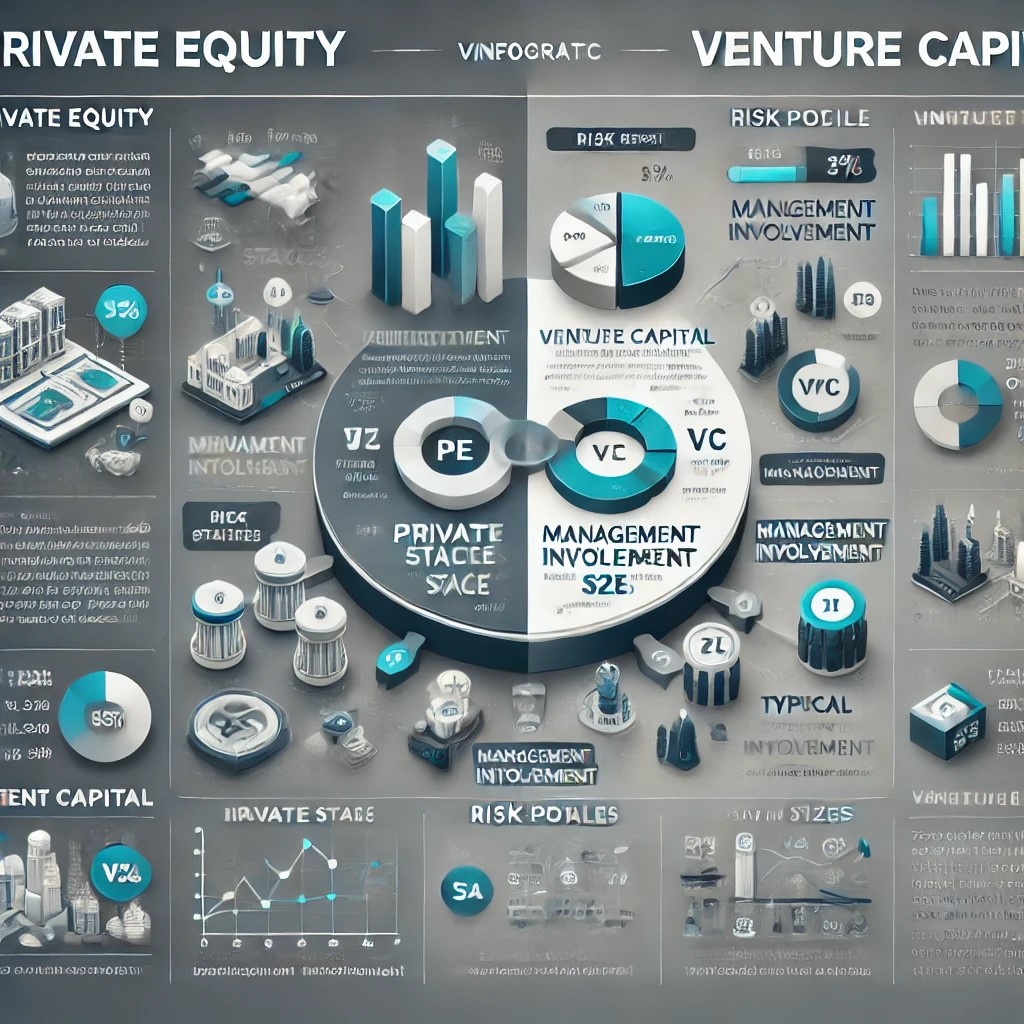In the world of finance, private equity (PE) and venture capital (VC) are two prominent forms of investment strategies, both playing crucial roles in the business ecosystem by providing capital to high-potential companies. Although they share some similarities, there are significant differences in their investment criteria, risk profiles, and operational approaches. This article explores these distinctions, current trends, and future predictions in PE and VC investments.

Fundamental Differences
1. Stage of Investment: The primary distinction between private equity and venture capital lies in the stage of the companies they invest in. Venture capital firms typically invest in early-stage, high-growth companies, often in the tech sector, that possess a high risk but also a high potential for exponential growth. In contrast, private equity firms usually invest in more mature companies that are already established but are looking for capital to restructure, enter new markets, or revitalize their operations.
2. Management Role: Private equity firms typically take a hands-on approach to management. They often change executive teams, streamline operations, and implement strategic initiatives to drive profitability. Venture capital investors, while active, usually provide guidance and expertise, leaving day-to-day management to the founders.

3. Risk and Returns: Venture capital investments carry a higher risk, primarily because they invest in younger companies without a proven track record. The potential for high returns is significant if these startups succeed. Private equity investments, while also risky, involve companies with established business models and steady cash flows, potentially leading to more predictable but possibly lower returns compared to VC.
Current Trends
In recent years, the lines between private equity and venture capital have started to blur, with PE firms increasingly participating in the venture space and vice versa. This trend is driven by the growing number of technology startups with massive growth potential and the increasing competition in acquiring profitable investment opportunities.
The use of technology and data analytics has also become a trend in both sectors. Investment firms are leveraging big data to identify potential investment opportunities and to conduct due diligence more efficiently. Machine learning algorithms predict market trends and consumer behavior, which can significantly impact investment decisions.

Future Predictions
Looking ahead, both private equity and venture capital are expected to face an evolving regulatory landscape. Increased scrutiny on investment practices and pressure for transparency might reshape how deals are structured and reported. Additionally, environmental, social, and governance (ESG) factors are becoming increasingly important. Investors are more frequently assessing the sustainability and ethical implications of their investment choices, driven by both consumer preference and potential regulatory changes.
Conclusion
While private equity and venture capital share the common goal of nurturing companies and achieving substantial returns on their investments, their strategies, risk tolerance, and involvement in business operations vary greatly. Understanding these differences is crucial for entrepreneurs seeking funding and investors looking to expand their portfolios. As the investment landscape continues to evolve, both PE and VC firms will need to adapt to stay competitive and successful.





